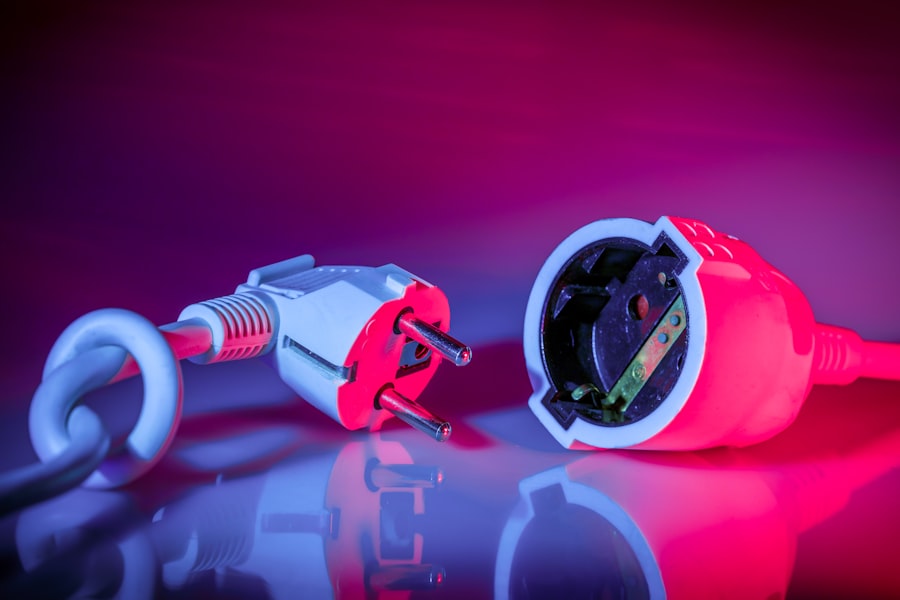Laser hair removal is a popular cosmetic procedure that utilizes concentrated beams of light to target and eliminate unwanted hair. The process works by emitting a specific wavelength of light that is absorbed by the pigment in the hair follicles. This absorption generates heat, which damages the follicle and inhibits future hair growth.
As you consider this treatment, it’s essential to understand how it works and what to expect during your sessions. The procedure typically begins with a consultation where a trained professional assesses your skin type, hair color, and overall suitability for the treatment. During the actual session, you will be given protective eyewear to shield your eyes from the laser light.
The technician will then apply a cooling gel to your skin to enhance comfort and protect the surrounding tissue. As the laser is applied, you may feel a sensation similar to a rubber band snapping against your skin. The duration of each session can vary depending on the size of the area being treated, but many find the process relatively quick and efficient.
Key Takeaways
- Laser hair removal targets hair follicles with concentrated light to inhibit future hair growth
- Shave the treatment area before the session and avoid sun exposure to prepare for laser hair removal
- Consider factors like skin tone and hair color when choosing a laser hair removal device
- Stay out of the sun and avoid plucking or waxing between sessions to maximize the effectiveness of laser hair removal
- Apply soothing creams and avoid sun exposure after treatment for optimal results and to manage any discomfort
Preparing for Laser Hair Removal
Protect Your Skin from the Sun
Before your appointment, it’s crucial to avoid sun exposure for at least two weeks. Tanning can increase the risk of complications and reduce the effectiveness of the treatment.
Prepare Your Hair
You should also refrain from waxing, plucking, or electrolysis for several weeks prior, as these methods can disturb the hair follicles that the laser targets. Instead, shaving is recommended a day or two before your session to ensure that the laser can effectively reach the follicles.
Be Open About Your Medical History
Additionally, it’s wise to discuss any medications or supplements you are taking with your practitioner. Certain medications can increase sensitivity to light or affect your skin’s response to the treatment. Being open about your medical history will help your technician tailor the procedure to your specific needs, ensuring a safer and more effective experience.
Choosing the Right Laser Hair Removal Device

Selecting the appropriate laser device is crucial for achieving optimal results in hair removal. There are various types of lasers available, each designed for different skin types and hair colors. For instance, Alexandrite lasers are often favored for lighter skin tones, while Nd:YAG lasers are more effective for darker skin types.
Understanding your skin type and hair characteristics will help you make an informed decision about which device is best suited for you. When choosing a clinic or practitioner, inquire about the types of lasers they use and their experience with each device. A reputable provider will have a range of options and will be able to explain the benefits and limitations of each one.
Additionally, consider reading reviews or seeking recommendations from friends or family who have undergone similar treatments. This research will help you feel more confident in your choice and ensure that you receive high-quality care.
Maximizing the Effectiveness of Laser Hair Removal
| Metrics | Results |
|---|---|
| Success Rate | 90% |
| Number of Sessions | 6-8 sessions |
| Duration of Each Session | 15-60 minutes |
| Pain Level | Minimal discomfort |
| Side Effects | Temporary redness and swelling |
To maximize the effectiveness of your laser hair removal sessions, consistency is key. Most individuals require multiple treatments spaced several weeks apart to achieve optimal results. This is because hair grows in cycles, and lasers are most effective on hair in the active growth phase.
Sticking to the recommended treatment schedule will help ensure that you target as many follicles as possible during their active phase. In addition to regular treatments, following pre- and post-care instructions provided by your technician can significantly enhance results. This may include avoiding certain skincare products or activities that could irritate your skin before and after treatment.
Staying hydrated and maintaining healthy skin can also contribute to better outcomes, as well-nourished skin is more resilient and responsive to treatment.
Post-Treatment Care for Optimal Results
After your laser hair removal session, proper post-treatment care is essential for achieving the best results.
Applying a soothing aloe vera gel or cold compress can help alleviate discomfort and reduce inflammation.
It’s also important to avoid hot baths, saunas, or vigorous exercise for at least 24 hours post-treatment to minimize irritation. In addition to immediate care, protecting your skin from sun exposure is crucial in the weeks following your session. The treated area may be more sensitive to UV rays, increasing the risk of pigmentation changes or burns.
Using a broad-spectrum sunscreen with a high SPF will help shield your skin from harmful rays and promote healing. Following these guidelines will not only enhance your results but also contribute to healthier skin overall.
Managing Pain and Discomfort During Treatment

While many people report minimal discomfort during laser hair removal, it’s natural to have concerns about pain associated with the procedure. The sensation can vary depending on individual pain tolerance and the area being treated. To manage discomfort effectively, many clinics offer topical anesthetics that can be applied before treatment to numb the area and reduce sensitivity.
During the procedure itself, some devices come equipped with cooling mechanisms that help alleviate discomfort as well. If you find yourself feeling anxious about pain, communicate openly with your technician; they can adjust settings or provide additional comfort measures tailored to your needs. Remember that everyone’s experience is different, and what may be uncomfortable for one person might be tolerable for another.
Addressing Common Concerns and Side Effects
As with any cosmetic procedure, it’s normal to have concerns about potential side effects associated with laser hair removal. Common side effects include temporary redness, swelling, or mild irritation in the treated area. These effects usually resolve quickly but can be alarming if you’re not prepared for them.
Understanding what to expect can help ease anxiety and allow you to focus on achieving your desired results. In rare cases, individuals may experience more significant side effects such as blistering or changes in skin pigmentation. It’s essential to choose a qualified practitioner who can assess your skin type and tailor the treatment accordingly to minimize risks.
If you do experience any unusual symptoms after your session, don’t hesitate to reach out to your provider for guidance on how to manage them effectively.
Long-Term Maintenance and Follow-Up Treatments
Once you’ve completed your initial series of laser hair removal sessions, you may wonder about long-term maintenance and follow-up treatments. While many individuals enjoy long-lasting results after their initial treatments, some may require periodic touch-ups to maintain smooth skin over time. Factors such as hormonal changes or new hair growth cycles can influence how often you need these follow-up sessions.
Your practitioner will provide personalized recommendations based on your individual response to treatment and hair regrowth patterns. Typically, touch-up sessions are less frequent than initial treatments—often occurring once or twice a year—making it a manageable commitment for most people. By staying proactive about maintenance, you can enjoy the benefits of laser hair removal for years to come, freeing yourself from the hassle of traditional hair removal methods.
In conclusion, understanding the laser hair removal process is essential for anyone considering this effective method of achieving smooth skin. By preparing adequately, choosing the right device, maximizing treatment effectiveness, and following post-care instructions diligently, you can ensure a successful experience that meets your expectations. With proper management of discomfort and awareness of potential side effects, you’ll be well-equipped to navigate this journey toward long-lasting results.
If you are looking to speed up the shedding process after laser hair removal, you may want to check out this article on inlaserhairremoval.com. This article provides tips and tricks on how to promote faster shedding of treated hair follicles, allowing you to enjoy smooth, hair-free skin sooner. Additionally, you can explore more helpful resources on laser hair removal by visiting inlaserhairremoval.com or contacting their team directly for personalized advice at inlaserhairremoval.com.
FAQs
What is laser hair removal?
Laser hair removal is a cosmetic procedure that uses a concentrated beam of light (laser) to remove unwanted hair. The laser targets the pigment in the hair follicles, damaging them and inhibiting future hair growth.
How long does it take to see shedding after laser hair removal?
Shedding typically occurs within 1 to 3 weeks after a laser hair removal treatment. This shedding is the process of the treated hair falling out as a result of the damaged hair follicles.
How can I speed up the shedding process after laser hair removal?
To speed up the shedding process after laser hair removal, you can gently exfoliate the treated area to help the hair follicles shed the damaged hair more quickly. Additionally, staying hydrated and maintaining a healthy skincare routine can also support the shedding process.
Are there any products that can help speed up shedding after laser hair removal?
There are certain products, such as exfoliating scrubs and lotions containing ingredients like salicylic acid or glycolic acid, that can help to encourage shedding after laser hair removal. However, it’s important to consult with your dermatologist or laser technician before using any products on the treated area.
Is it normal to experience shedding after laser hair removal?
Yes, shedding after laser hair removal is a normal part of the process. It indicates that the treatment is working and that the damaged hair follicles are releasing the treated hair.






